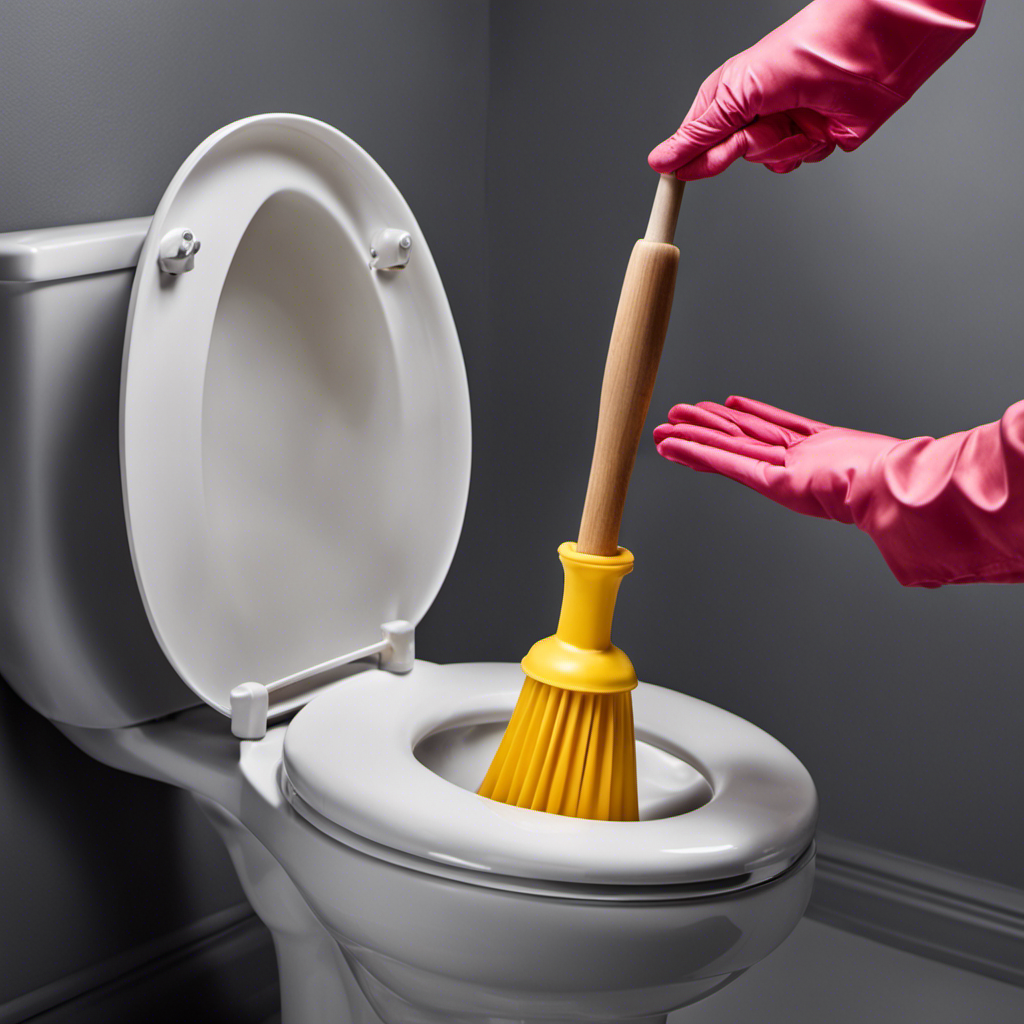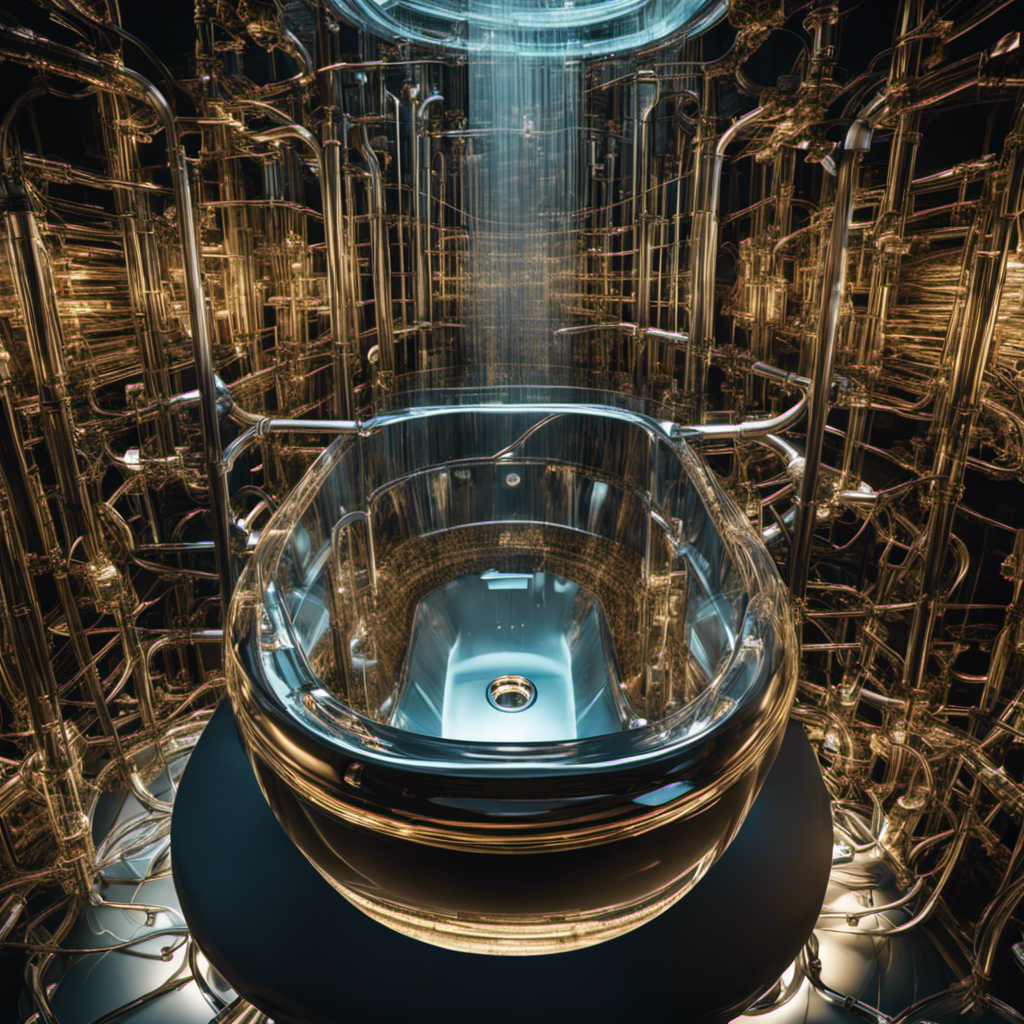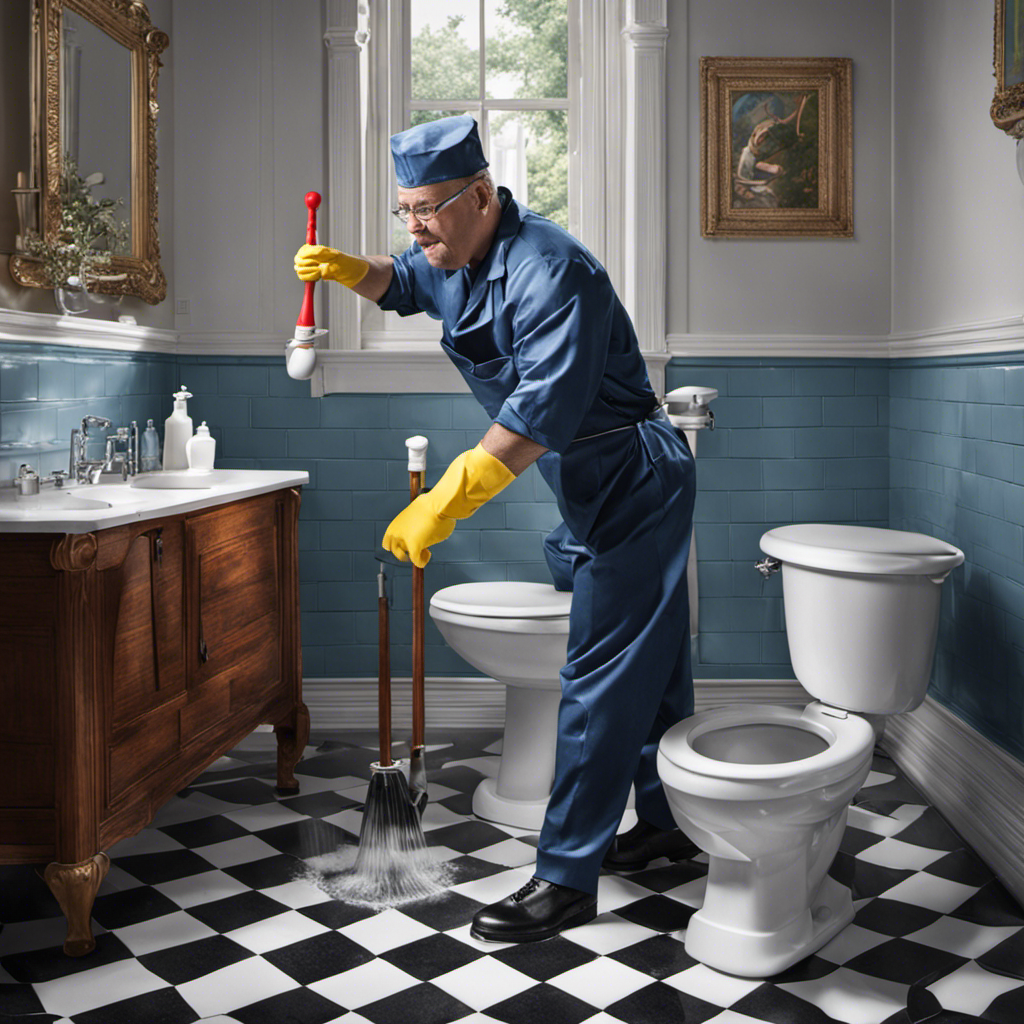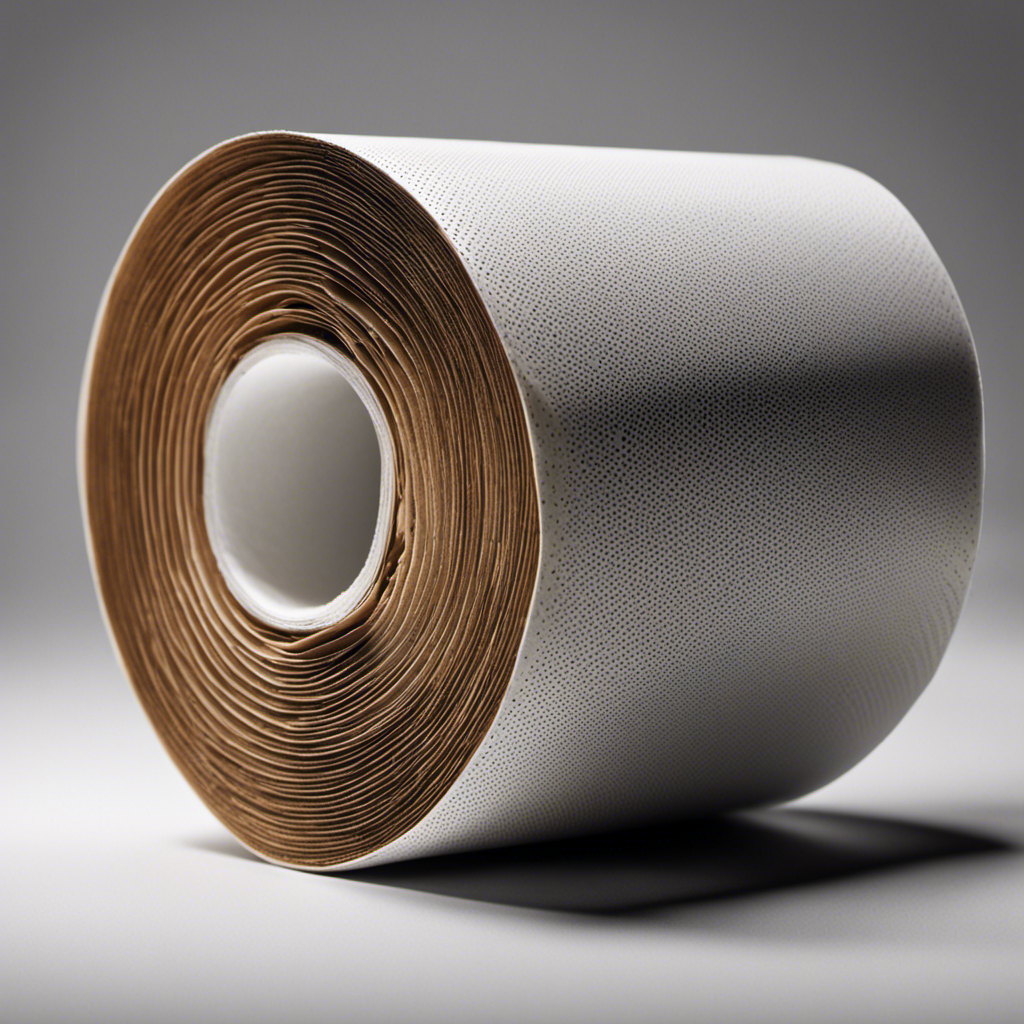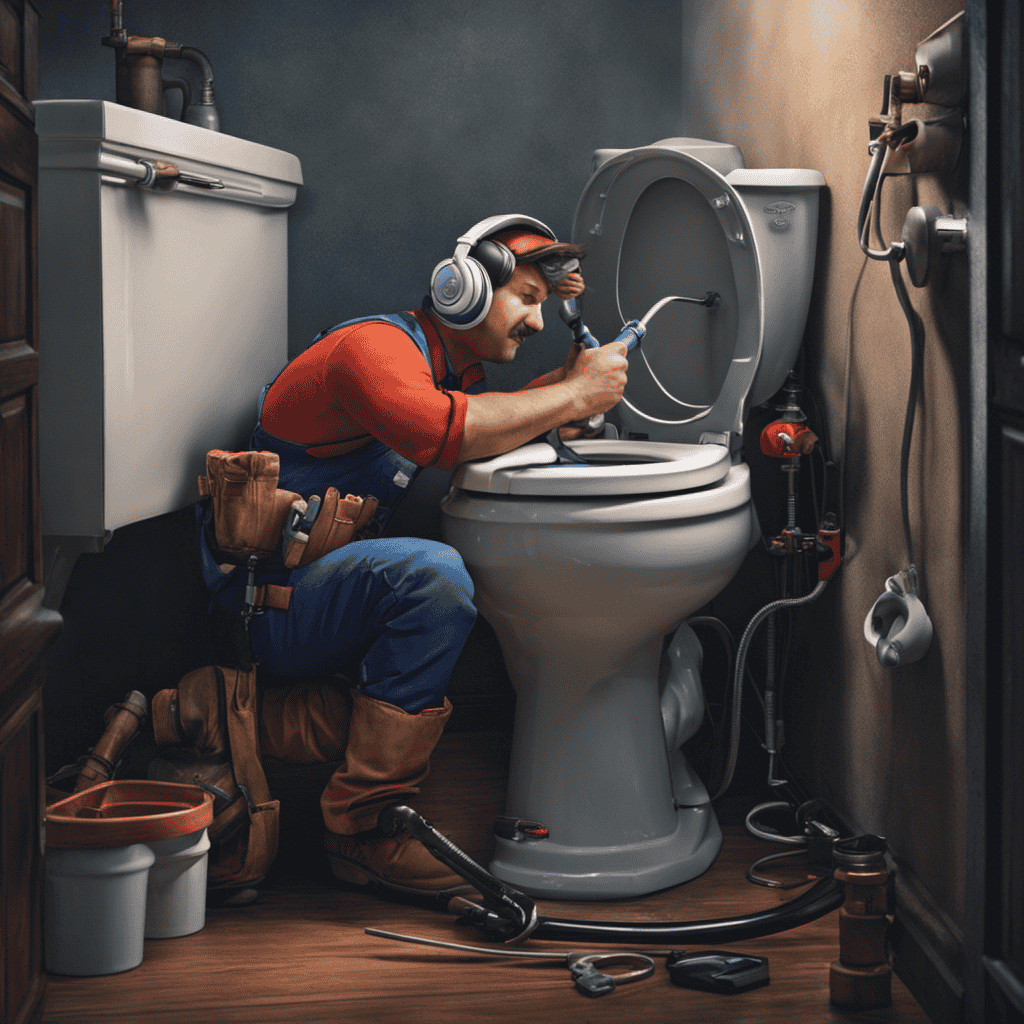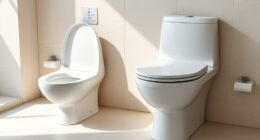I know plunging a toilet can be a messy and unpleasant task, but trust me, it’s a skill worth mastering. In this guide, I’ll show you the proper technique for using a plunger on a toilet, as well as some troubleshooting tips for common issues.
By following these steps, you’ll be able to handle toilet clogs like a pro and prevent future plumbing problems.
So, let’s dive in and conquer that clog!
Key Takeaways
- Cup plunger and flange plunger are the two common types of plungers for toilets.
- Proper plunger maintenance is important for effectiveness, including cleaning and storing the plunger after each use.
- Preparing the toilet before plunging by filling the bowl with enough water helps create a proper seal for suction and makes plunging easier.
- When using a plunger on a toilet, it is important to avoid pushing too hard or too fast, create a proper seal, use a plunger with a flat bottom, and plunge in the right direction.
Types of Plungers for Toilets
There are two main types of plungers for toilets: the cup plunger and the flange plunger.
The cup plunger is the most common and recognizable type, with a rubber cup attached to a wooden or plastic handle. It is designed to create a seal around the drain and create pressure to dislodge clogs.
The flange plunger, on the other hand, has an additional soft rubber flap or flange that extends from the cup. This flange helps provide a better seal on toilets with a curved drain opening.
Plunger maintenance is important to ensure their effectiveness. After each use, it’s essential to clean the plunger thoroughly and store it in a dry place.
If you don’t have a plunger or prefer alternatives, you can try using a toilet auger or a drain snake. These tools can also help unclog stubborn blockages.
Now that we know the types of plungers available, let’s move on to preparing the toilet before plunging.
Preparing the Toilet Before Plunging
Before you start, make sure to fill the toilet bowl with enough water to cover the plunger head. This step is crucial for effective toilet bowl cleaning and the success of your plunging efforts. Here’s why the water level is important:
-
Creates a proper seal: When the plunger is submerged in water, it forms a tight seal around the drain. This seal is necessary to create the suction needed to dislodge clogs.
-
Provides lubrication: The water acts as a lubricant, making it easier for the plunger to move up and down. This reduces the risk of splashing or damaging the toilet bowl.
-
Increases plunging power: With the water covering the plunger head, you’ll be able to generate more force when plunging. This increased pressure helps to break up and remove stubborn clogs.
-
Prevents air pockets: If the water level is too low, air pockets can form, reducing the effectiveness of the plunging action. By filling the bowl adequately, you ensure that the plunger can create a strong vacuum to dislodge the blockage.
Proper Technique for Using a Plunger on a Toilet
To effectively unclog a toilet, make sure you’re using the proper technique when using a plunger. Many people make common mistakes when using a plunger, which can actually worsen the clog or cause other issues. Here are some important tips to keep in mind:
| Common Mistakes | Benefits of Using a Plunger |
|---|---|
| Pushing too hard or too fast | Effectively creates suction |
| Not creating a proper seal | Clears clogs quickly |
| Using a plunger with a flat bottom | Safely unclogs without damaging the toilet |
| Not plunging in the right direction | Cost-effective and environmentally friendly |
Troubleshooting Common Issues While Plunging
If you’re experiencing resistance while plunging, try adjusting the angle of your movements to create a stronger suction.
Here are some common mistakes when plunging and alternative methods for unclogging toilets:
-
Insufficient water level: Ensure that there is enough water in the bowl to create a seal with the plunger. Add water if necessary.
-
Incorrect plunger type: Use a flange plunger specifically designed for toilets, as it provides better suction and coverage.
-
Inconsistent pressure: Maintain a steady and consistent pressure while plunging to effectively dislodge the clog. Avoid abrupt movements that can break the seal.
-
Overreliance on plunging: If plunging doesn’t work, try using alternative methods like using a toilet auger or chemical drain cleaner, following the instructions carefully.
Tips for Preventing Toilet Clogs in the Future
One way to prevent future toilet clogs is by being mindful of what you flush down the drain. It’s important to remember that toilets are designed to handle human waste and toilet paper. Flushing other items can lead to clogs and damage to your toilet plumbing. To help you better understand what can and cannot be flushed, here is a table outlining some common items:
| Flushable | Non-Flushable |
|---|---|
| Toilet Paper | Wet Wipes |
| Human Waste | Feminine Hygiene Products |
| Biodegradable Toilet Paper | Paper Towels |
Frequently Asked Questions
Can I Use a Plunger on a Toilet That Is Completely Clogged With Solid Waste?
Yes, you can use a plunger on a toilet that is completely clogged with solid waste. To properly use a plunger on a toilet, follow these steps: 1) Create a seal with the plunger, 2) Push and pull forcefully to dislodge the clog.
Should I Remove the Water From the Toilet Bowl Before Using a Plunger?
Before using a plunger on a toilet, it is advisable to remove some of the water from the bowl. This helps to increase the effectiveness of the plunger and prevent any potential overflow.
Can I Use a Plunger on a Toilet With a Weak Flush?
Yes, you can use a plunger on a toilet with a weak flush. It is a common and effective method for unclogging toilets. However, if the problem persists, there are alternative unclogging methods to consider for proper toilet maintenance.
What Should I Do if the Plunger Is Not Creating Suction?
If the plunger is not creating suction, there are alternative solutions and troubleshooting tips you can try. Sometimes it’s just a matter of finding the right technique or adjusting the plunger’s position.
Is It Normal for the Water Level in the Toilet Bowl to Rise While Plunging?
When plunging a toilet, it is normal for the water level in the bowl to rise. This happens because the force created by the plunger pushes air and water into the drain, causing the water level to temporarily increase.
Conclusion
In conclusion, using a plunger on a toilet is a simple and effective way to unclog it. By choosing the right type of plunger and preparing the toilet properly, you can tackle the issue with ease.
Remember to use the proper technique, applying firm and consistent pressure, while troubleshooting any obstacles that may arise. By following these steps, you can say goodbye to toilet clogs and enjoy a smoothly running bathroom.
Happy plunging!
